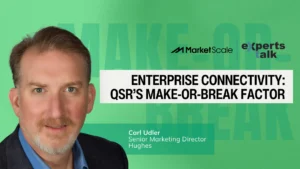When Setting Light Levels for Cannabis Growth, You Can Have Too Much of a Good Thing
When growing cannabis indoors, lighting is a major consideration. Growers have their opinions on what types of lights to use and which spectrum works best. But one part of the lighting equation is clear: a certain quantity of light is necessary to produce a healthy crop.
Measuring Light Levels with PPFD
Some common units for measuring light levels are lux and foot-candles. However, these units only quantify an instantaneous measurement of the intensity of light visible to the human eye—about 500 to 600 nanometers. Photosynthesis, however, incorporates a broader spectrum of light wavelength, known as Photosynthetic Active Radiation (PAR), in the range of 400 to 700 nanometers. A better method of measuring light levels involves measuring the actual number of photons of light reaching a plant in a given time period. The term photosynthetic photon flux density (PPFD) conveys the amount of PAR landing on a specific location of a plant canopy, measured in the unit µmols per square meter per second (µmol/m²/s).
The Saturation Point
Photosynthesis uses light energy to synthesize carbohydrates and oxygen from carbon dioxide and water. As PPFD increases, photosynthetic rates also increase until a specific saturation point is attained. Each plant species has a unique light saturation point where photosynthetic levels plateau and superfluous light can actually prove harmful. Also, each phase of growth benefits from different light levels. During the establishment growth of seeds or cuttings, light intensity should be relatively low while the plant is developing its roots and not actively performing photosynthesis. Light concentrations can be gradually increased as plants transition into an actively photosynthetic stage – the vegetative and reproductive growth phases to increase the rate of photosynthesis and produce robust, healthy plants. Recommended PPFD levels for the establishment phase of cannabis are 75-150 µmol/m²/s for cuttings and 100-300 µmol/m²/s for seedlings. For cannabis in the vegetative stage, PPFD levels of 300-600 µmol/m²/s are recommended and may be increased to over 600 µmol/m²/s in the reproductive phase.
Visual Signs of Too Much Light
Regardless of the numbers, it is essential to look for signs that plants are receiving too much light. As plants are exposed to an excess of light, they take in more nutrients than they otherwise would, leading to a buildup of nutrients in the plant and causing a condition known as nutrient burn. Symptoms of nutrient burn are when the tips and edges of leaves take on a brown, burnt appearance. An excess of a specific nutrient can be exhibited in other ways, such as nitrogen toxicity where leaves turn dark green. In addition, when the light is too intense or too close, it can lead to leaf bleaching, where the top leaves closest to the light are getting lighter than the rest of the plant, or are yellowing while the rest of the plant stays green.
The Proper Lighting Leads to Healthy Plant Growth
Lighting, very often, is the single most expensive and critical part of a successful Controlled Agriculture Environment (CEA). Using the right lighting, correctly placed and for the optimal amount of time, leads to healthy, vigorous plant growth and increased yields.
Since 2005, Illumitex has led the horticulture lighting industry with a perfect balance of scientific know-how and innovative design. Our specialized team can design, produce, deliver and support exactly the right solution for your unique environment and objectives.
Improve efficiencies, crop quality, profitability and more by taking your horticulture lighting and technology to the next level. Contact Illumitex today to see how.









